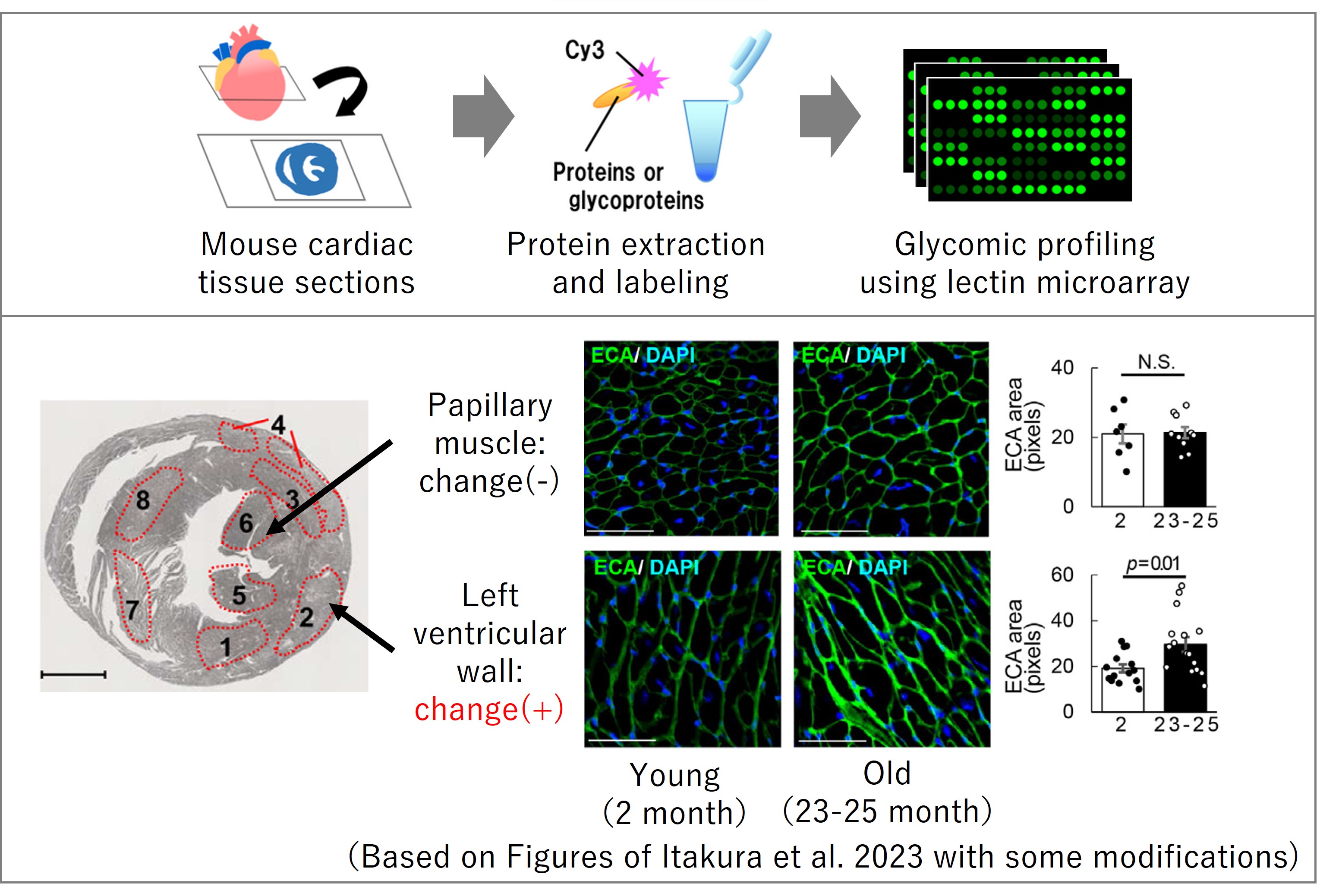Spatiotemporal changes of tissue glycans depending on localization in cardiac aging
In this study, aging-related protein glycosylation changes in normal mice was elucidated by research groups including Yoko Itakura (Researcher) and Masashi Toyoda (Theme Leader) of Research Team for Geriatric Medicine (Vascular Medicine), Tokyo Metropolitan Institute of Gerontology (TMIG), Chiaki Nagai-Okatani (Senior Researcher) and Atsushi Kuno (Group Leader) of Molecular Molecular and Cellular Glycoproteomics Research Group, Cellular and Molecular Biotechnology Research Institute, AIST, etc.
We have developed a tissue glycomic profiling method using laser microdissection and lectin microarray (Nagai-Okatani et al. Methods Mol Biol, 2022). Itakura applied for mouse cardiac tissue sections to elucidate aging-related changes in protein glycosylations, focusing on the regions where cardiac diseases often occur. This analysis revealed that the glycomic profiles and their aging-related changes were different depending on the localizations in the cardiac tissue. This study will facilitate further understanding functions of tissue glycans especially associated with cardiac diseases, comparing the differences in mouse and human.
The glycomic profiles and laser microdissection images of mouse cardiac tissues obtained in this study are freely available in an online database “LM-GlycomeAtlas” of the GlyCosmos Portal, which is an official glycoscience portal of the Japanese Society of Carbohydrate Research (JSCR).
The tissue glycomic profiling method developed in AIST (Upper) and representative glycosylation changes observed in this study (Lower)

Publication
- Title: Spatiotemporal changes of tissue glycans depending on localization in cardiac aging
- Authors: Yoko Itakura et al.
- Journal: Regenerative Therapy 22: 68-78 (2023)
- DOI: 10.1016/j.reth.2022.12.009
Collaboration
- Tokyo Metropolitan Institute of Gerontology (TMIG), Kitasato University, and Tokyo University of Pharmacy and Life Sciences
Introduction of this article (at TMGHIG’s website)
Data resources
- LM-GlycomeAtlas: https://glycosmos.org/lm_glycomeatlas/index